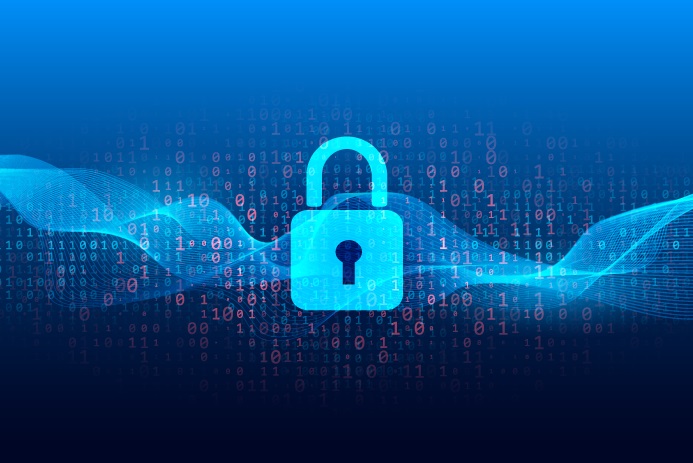Protect Your Data, Protect Your Business: Importance of A Data-Centric Security Strategy

Data is the heart of every business. It is, therefore, crucial to keep it from falling into the wrong hands. Recent headlines, unfortunately, suggest an increase in cases of sensitive data of companies getting stolen. One of the factors contributing to this trend is the rising number of endpoints employees use for their work. Endpoint devices like laptops, smartphones, tablets, etc. connect to the corporate network. The theft or loss of any endpoint could lead to financial loss and reputational damage. Therefore, it’s important to implement necessary security measures to prevent or mitigate potential damage.
What Is Data-Centric Security?
Data-centric security focuses on protecting sensitive data instead of the systems that store it. Here, data is classified based on its sensitivity, and security controls are applied to the data rather than the systems that handle it. This model allows companies to secure their sensitive data irrespective of where it’s stored or how it is accessed.
Importance Of Data-Centric Security Strategy In Today’s Digital Landscape
Cyber-attacks are a threat to businesses of all sizes. Given that companies collect and process vast amounts of data, it is vital to protect sensitive customer information, financial records, and intellectual property. Nowadays, such data is stored and accessed through various endpoints. By applying a data-centric security strategy, organisations can mitigate the risk of cyber-attacks. This involves having security controls in place to protect against cyber threats, as well as backup solutions to ensure that data can be quickly restored in case of a cyberattack.
Data breaches can put a company’s reputation in ruin. A single data breach can result in significant financial losses, legal liabilities, and loss of customer trust. According to Statista, the global average cost per data breach, as of 2022, stood at $4.35 million (Rs. 357.6 million), a rise from $4.24 million (Rs. 348.5 million) in the previous year. A data-centric security strategy can help prevent data breaches by using data encryption, access control, and data loss prevention techniques. If an endpoint is compromised, the backup and recovery solution, which is part of the data-centric security strategy, ensures that the data is secure and protected.
Devising A Data-Centric Security Framework
Key elements essential to a solid data-centric security strategy framework include:
- Data classification: Data should be categorised as per its sensitivity and use case. It involves identifying the kinds of data after data discovery and assigning classification labels to that data. This is a vital part of the framework because different forms of data need different approaches and levels of protection.
- Access control: After the data is classified, access controls can be put to ensure that only authorised personnel can access it. This includes authentication and authorisation mechanisms like role-based access control and multi-factor authentication (MFA). Data must be assigned on an as-required basis. This ensures users are only exposed to the data they require for undertaking their tasks and nothing beyond it.
- Encryption: Encryption protects data in transit and at rest. So, even if an attacker gains access to the data, the individual is not able to read it without the decryption key.
- Data monitoring and auditing: With data monitoring tools, security teams can quickly detect any suspicious activities. Auditing tools can track who gained access to what data, allowing enterprises to investigate incidents and ensure compliance with regulations.
Transform Endpoint Backup And Recovery Into Data-Centric Strategy
A study by the Ponemon Institute, published in January 2020, found that 68% of respondents (IT security professionals) reported that their enterprise experienced one or more endpoint attacks that compromised data assets and/or IT infrastructure. Endpoint devices are often used by employees to create and access company data, making them a crucial part of an organisation’s data infrastructure. However, these devices are also highly susceptible to data loss due to hardware failures, software errors, cyberattacks, and user errors.
Enterprise Endpoint Backup Solutions help organisations address these risks by providing automated, real-time backup and recovery of endpoint data. This ensures that important data is protected against loss or corruption and it’s quickly restored in the event of a disaster or outage. Yotta Safe offers data protection solutions with features such as remote data wiping, seamless technology migration, compliance management, and ransomware protection. With Yotta Safe, users can benefit from better control and visibility over their data, simplified technology migrations, compliance with legal requirements, and protection against cyber threats.
Setup A Disaster Recovery Plan
A Disaster Recovery Plan is essential to any comprehensive data-centric security strategy. It lays down the procedures for responding to an attack, thereby minimising its effect, and quickly recovering from the damage caused.
To set up a disaster recovery plan, the enterprise must identify its critical data. This will help prioritise which data requires immediate recovery. Next, the recovery objectives should be established, based on which, a recovery plan is created. The procedures for backup and restoration of critical data must be included. It’s important to regularly test and update the disaster recovery plan to ensure that it’s effective and relevant.
Prioritise Data-Centric Security In Your Enterprise
A data-centric security strategy is important for any company that wants to protect its sensitive data, adhere to regulations, reduce downtime, and improve productivity. While creating a framework for this strategy, it is wise to include enterprise endpoint backup solutions for ensuring complete protection of the critical data on endpoints. Creating a disaster recovery plan is useful as it provides a roadmap for restoring data to its pre-attack state. It helps minimise data loss by outlining procedures for data backup, restoration, and system recovery.
A data-centric security strategy, in today’s landscape is no longer an option but a must for organisations to secure their sensitive information from cyber attackers. With the volume of data continuing to grow, the need for a data-centric security strategy is only going to increase. To stay ahead, organisations need to continuously improve their security measures and invest in the latest cybersecurity solutions.




